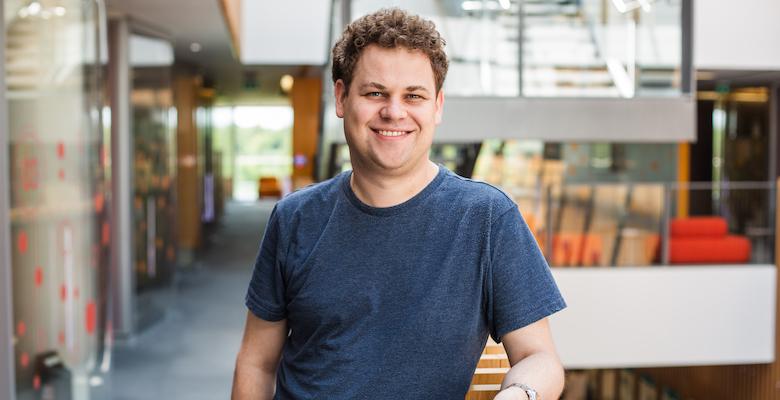We (virtually) sat down with John Marioni, new collaborator on the Cancer Grand Challenges IMAXT programme to find out more about his work.
John is a senior group leader at the Cancer Research UK Cambridge Institute, an associate faculty member at the Sanger Institute and, as of March 2021, the head of research at the European Bioinformatics Institute (EMBL-EBI).
What’s your scientific background?
By training I'm a statistician, but throughout my career I've migrated closer and closer towards biology. I now occupy that exciting, growing space at the interface of computational biology and experimental biology.
Where are you based?
Cambridge, UK. It’s hard to imagine anywhere else in much of Europe that offers a better scientific environment, especially for the kind of work I do.
Can you tell us more about your research?
We develop and apply methods to understand cell fate decisions in the context of normal development and disease, including cancer. For the past 5 or so years, we’ve been at the forefront of developing methods for all facets of single cell analysis – we’ve expanded this to include integration with spatial methodologies, which is where we synergise with the IMAXT team.
I’m also a committee member of the Human Cell Atlas, an international project that tries to define all cell types across the human body. That’s with my ‘normal biology’ research hat on, but there’s still a link to cancer research – you need to understand what’s normal before you can really understand tumorigenesis.
What’s most exciting about working with the IMAXT team?
You can learn some important things by measuring protein, some important things by measuring RNA. But to get a holistic view of the tumour microenvironment, you need to integrate these different types of dissociated data with spatial and mechanical information. IMAXT is now at a point where the technologies are mature enough to start this integration to gain new insights into biology.
It’s that integration with spatial technology that I find very exciting. We’ve done this previously in the context of early mouse development, through gastrulation and early organogenesis, but applying that in the context of cancer brings a different array of challenges. That's very interesting to work on from a computational perspective.
What does global multidisciplinary collaboration mean to you?
People with different scientific backgrounds think about biological questions a little bit differently – a cross-section of different expertise is really important to get the best out of people. I try to keep my lab fairly balanced, ranging from people like me who want to apply their background in statistics to biology, to people with more classical biological backgrounds, to computer scientists and physicists. All bring important, complementary views to a biological problem.
A diversity of cultural backgrounds is very important to science. One should realise the value of globality, which is conducive to performing better research.
And maybe it’s tangential, but I strongly believe diversity needs to apply to the science itself. Sample cohorts must be representative of global populations, not just those that have been classically studied. At the Human Cell Atlas, we’re thinking about how diverse population groups are properly represented in studies moving forward, but as a community we have a bit more to do in that regard.
What’s been the highlight of your past year?
It’s been quite a year hasn’t it – it feels like it’s been about 57 months! The thing I’m proudest of is how well my lab has kept going, they’ve pushed the science forward and we’ve had a really strong year scientifically. I hope they appreciate that – it's not been an easy year but I’m really proud of them.
What are you most looking forward to this year?
Seeing my lab in person and having those serendipitous conversations that one really cannot effectively replicate over Zoom.
